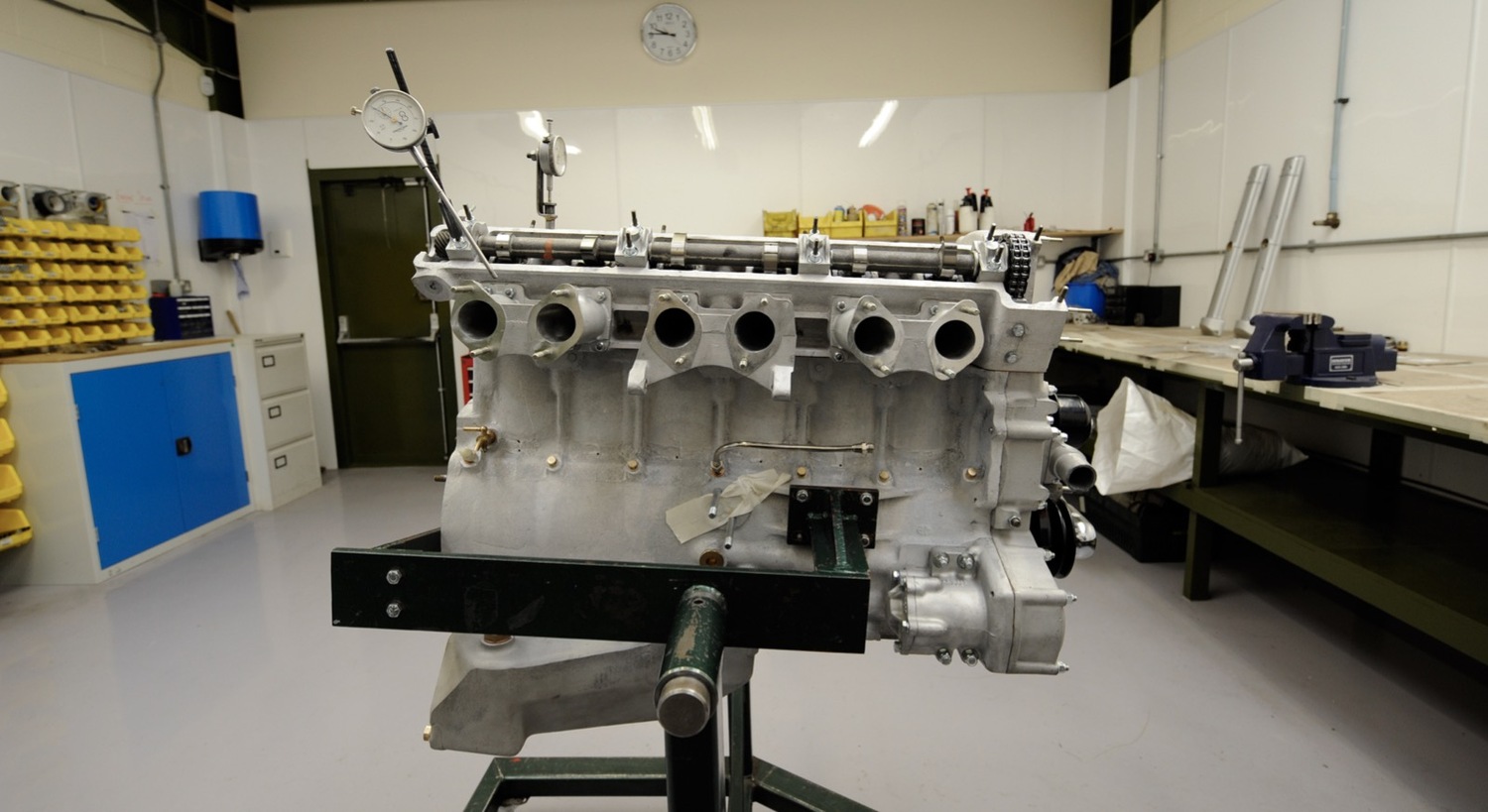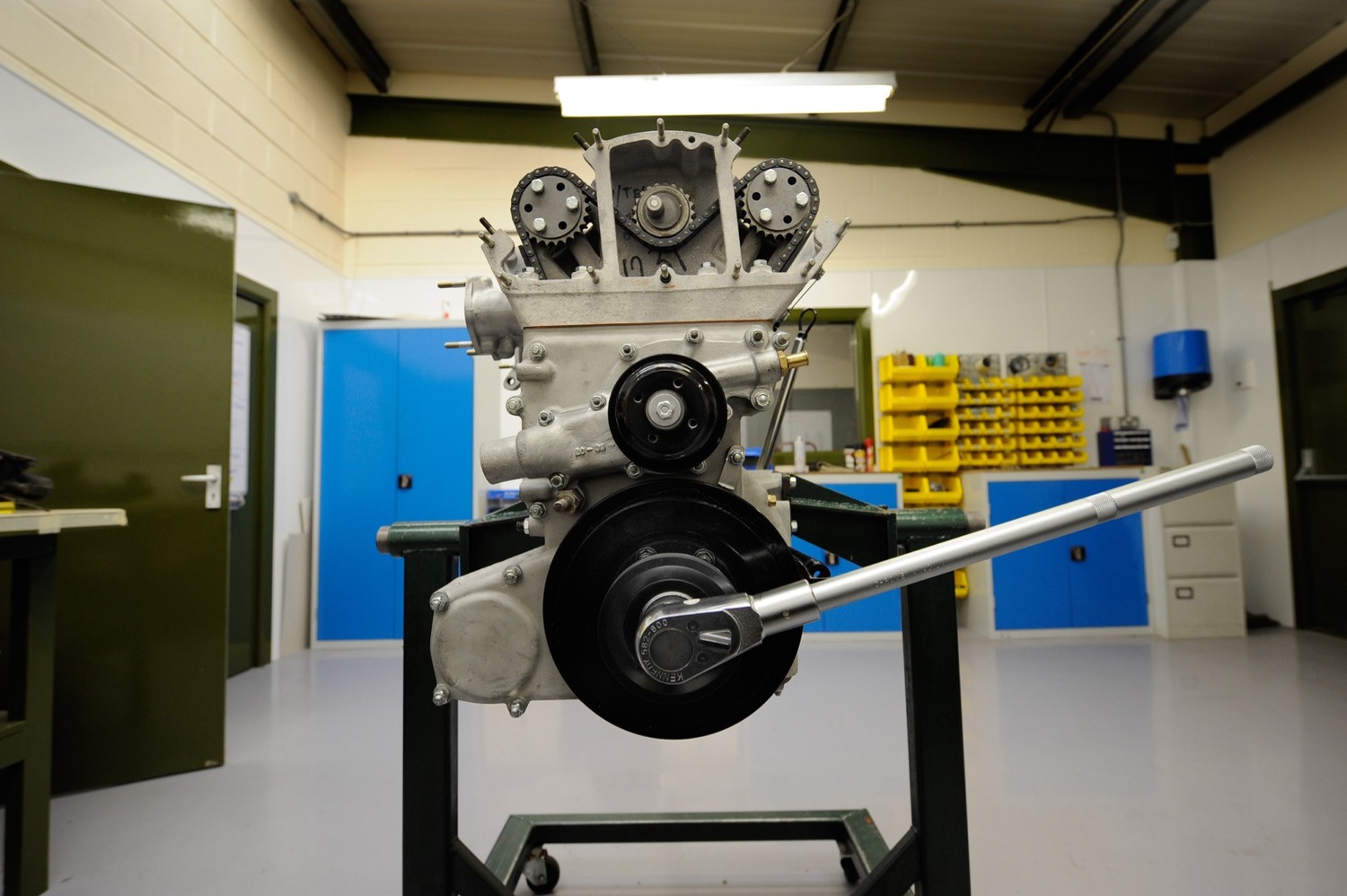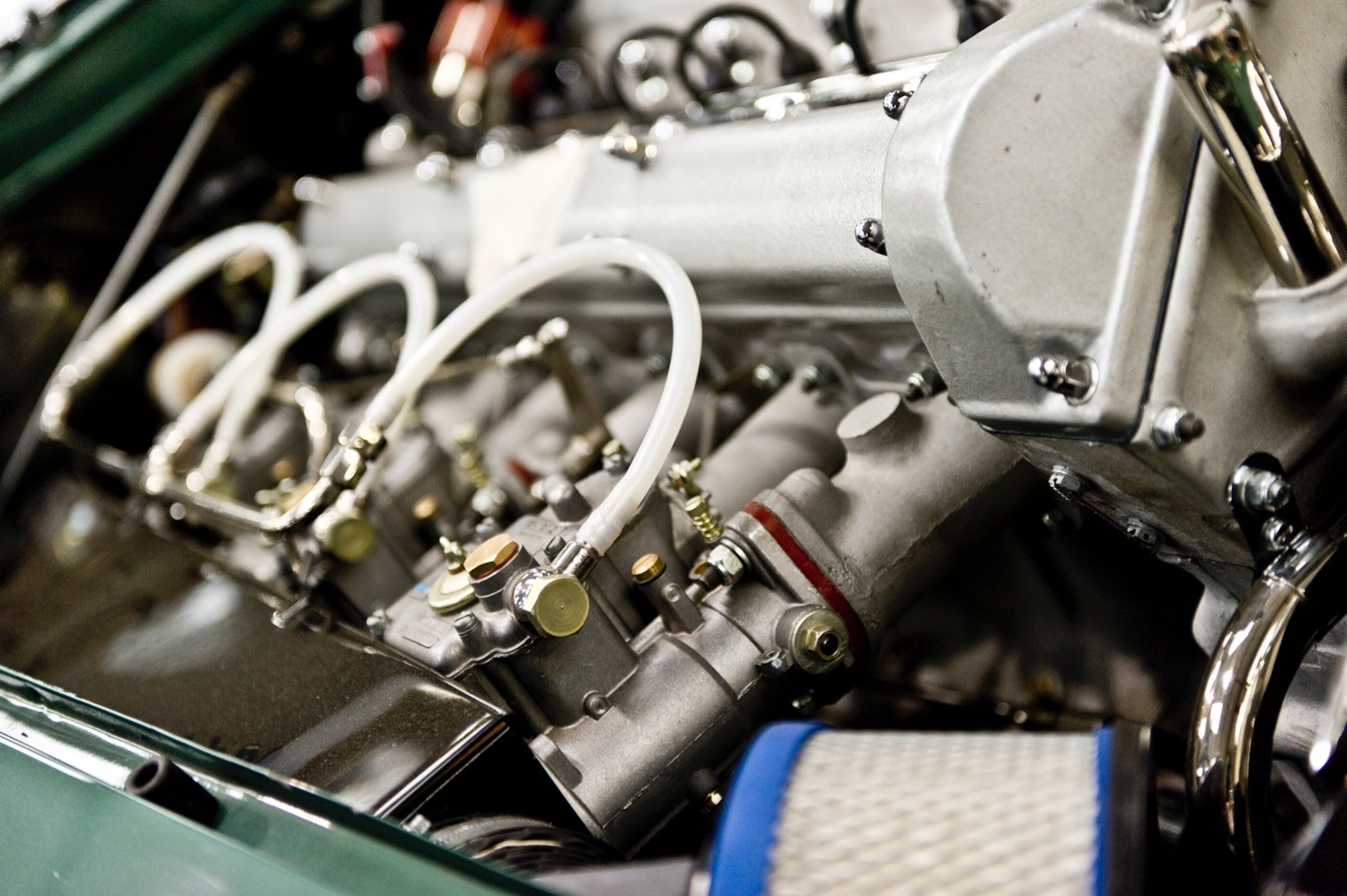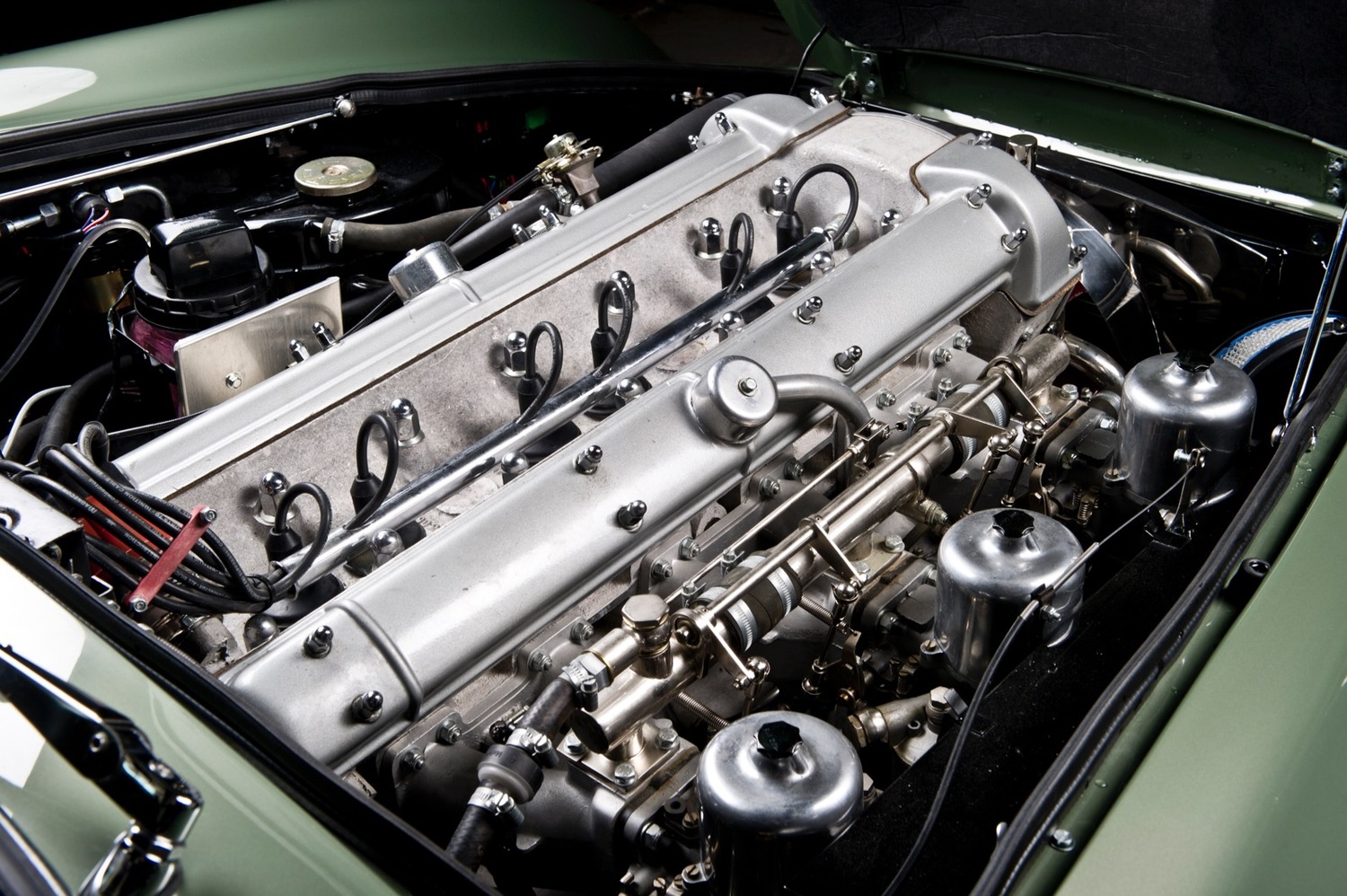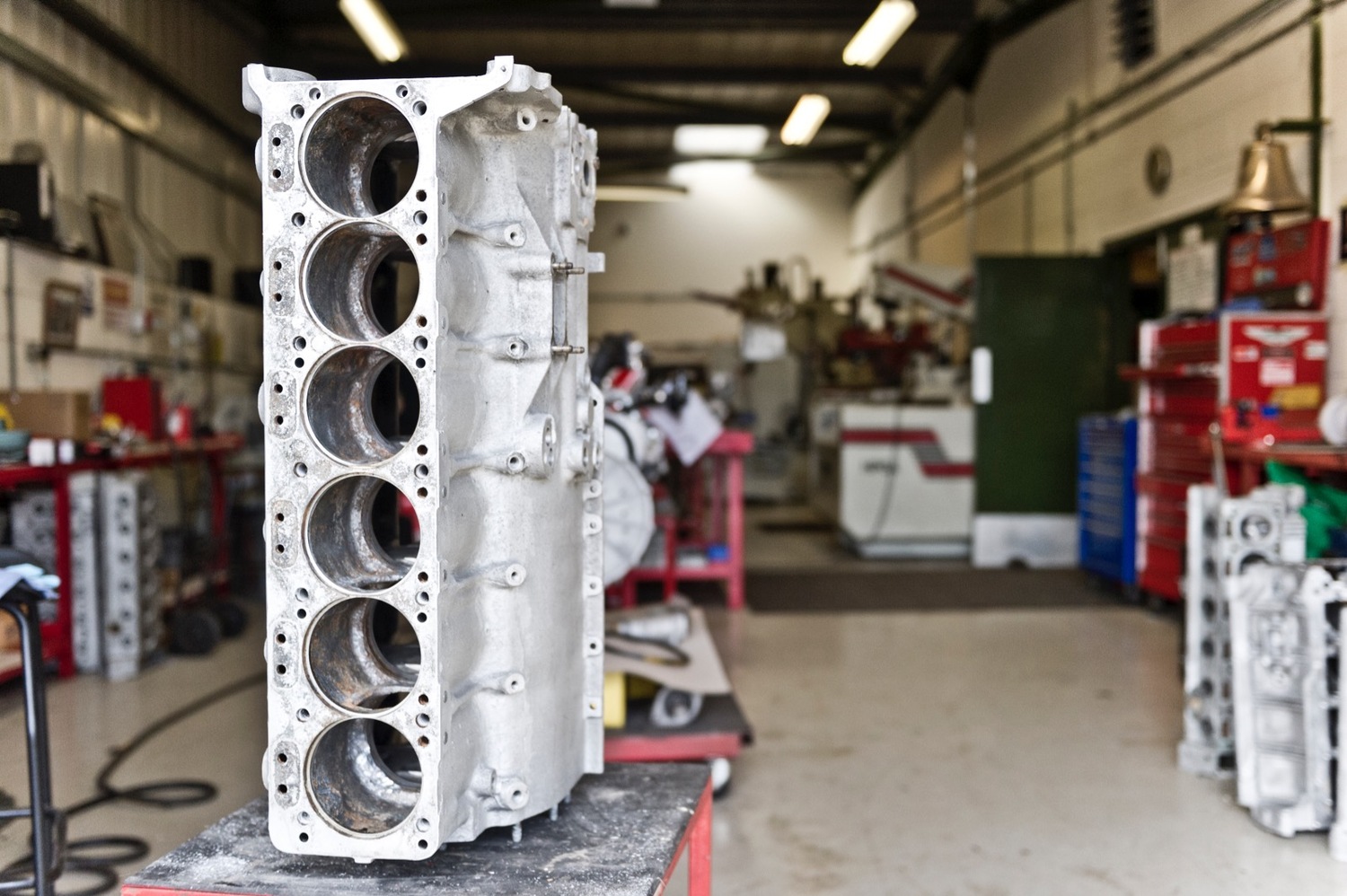
The six-cylinder Aston Martin engine, first introduced in the DB4, is not only one of the great Aston engines; it's one of the world's most famous power plants, immortalised in cars such as the DB4 GT Zagato and the 1964 DB5 used by silver-screen spy James Bond in the film 'Goldfinger'. Aston Workshop have rebuilt and cared-for countless Aston Martin Straight-6 engines, and we now offer our own in-house designed and built engine blocks.

Designing an All-New Aston Martin Engine
Design of Aston Martin’s legendary DB4 engine commenced about 1955 when the Aston Martin Technical and Engineering Director in post at the time, John Wyer, was tasked with planning a new Aston Martin to replace the DB2 family of cars, now reaching the full maturity. This new model would also require the development of a new engine.
Engine development was entrusted to a promising young Polish engineer, Tadek Marek. For some time, a discussion ensued as to whether the future of the company would be best served through a continuance of a 3 litre sized engine, which would emphasise refinement, or whether to emphasise the sporting ambitions of Mr David Brown, the company owner, in his quest for a sports racing car that would win at Le Mans. That debate was quickly resolved and resulted in an outline decision of an engine of approximately 3.5 to 4.0 litre capacity, 6 cylinder in line with twin overhead camshafts, capable of powering a new Aston Martin grand touring car at speeds upto 150 mph. This would require an engine capable of developing approximately 250 bhp at the wheels.

The Aston Martin DB4 Engine
Right from the start, another debate ensued as to whether this engine should use a cast iron block, which was preferred for reasons of refinement, or to use aluminium. That debate was settled quickly when it was discovered that there was a national shortage of suitable iron foundries. This made the choice of aluminium irrevocable. With an eye to refinement, need for longevity and endurance, Tadek Marek planned from the outset to use a seven bearing crank of unusually generous dimensions and being aluminium, also continued use of wet liners. The cylinder head, also of aluminium, would be twin overhead camshafts, allowing use of fully hemispherical combustion chambers.
The DB4 engine was initially sized with an engine of 3.7 litres capacity with a bore and stroke of equal dimensions of 92 mm. It developed about 240 bhp with a torque of 240 lbs.ft, using twin SU carburettors.
In 1961, following the launch of the Aston Martin Lagonda Rapide, the engine capacity was raised to 4 litres by increasing bore size to 96 mm, and used down draught Solex carburettors, the intention being to maximise refinement. There was a reduction in power, but its general refinement was markedly improved and there was good low speed torque, all vital characteristics for a bespoke coachbuilt sports saloon for the rich and famous.
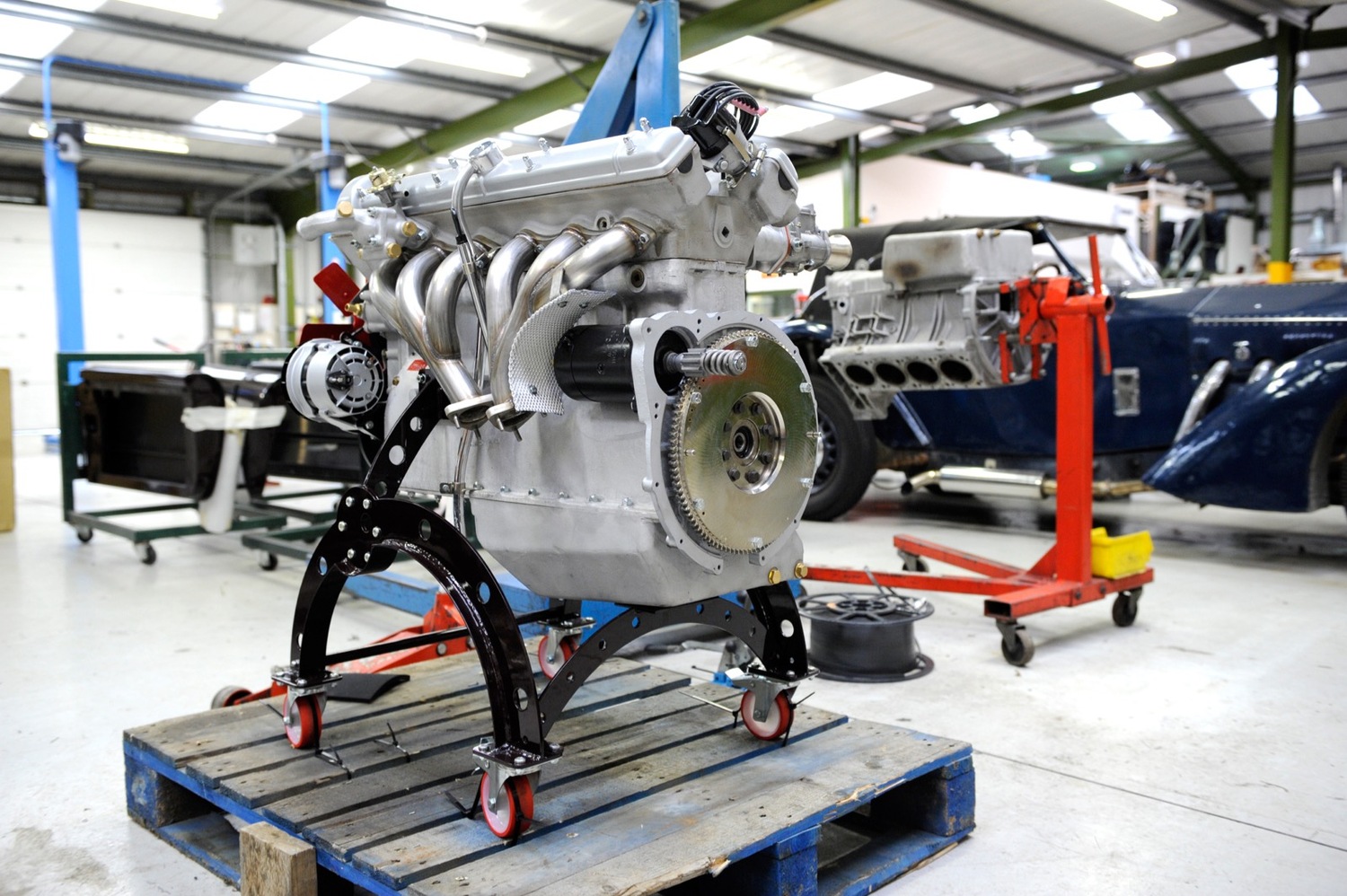
The Aston Martin DB4 GT
Higher performance variants of the DB4 engine were considered from an early stage of the engine’s development and this enabled the launch of the DB4 GT in 1960, within a year of the DB4 launch itself. A change in the rules for the 1960 Le Mans race led to the realisation that the continued use of the DBR1 and 2, which had won at Le Mans in the previous year, couldn't continue. David Brown's decision to stop further major funding to sports car racing led to the realisation that the only way to provide privateers with competitive cars was to create a DB4 lightweight variant. Thus the concept of the DB4 GT was born, and with it two cars for the 1960 Le Mans race. The DB4 GT was announced and exhibited at the 1959 British Motor show. It had a reduced wheelbase, 2 seat accommodation, 35 gallon fuel tank and with thinner gauge panelling. The engine was further developed through improved engine breathing, a higher compression ratio, modified camshafts and a twin spark cylinder head design.
Carburation was improved with the use of triple twin choke DCOE 45 side draught carburettors, with increased compression to 9.7 to 1. The wider camshafts gave a higher degree of valve overlap. Power went up to 314 bhp with increased torque of 287 lbs.ft. The two works cars were further developed, each with a significantly lightened chassis and with DCOE 50 sized carburettors; an additional 15 to 20 bhp was achieved. The DB4 GT, while not possessing the performance or reliability to challenge the then Ferrari domination at Le Mans, was highly successful for many major GT car races of the period, both in the UK and abroad.
In 1960, a further attempt was made to develop a lighter weight car that would be truly competitive and this led to the commissioning of the Italian styling house, Zagato, being requested to produce a light weight body for the DB4 GT chassis. The DB4 GT Zagato was exhibited at the 1960 Motor Show and was then offered as an option. Two cars were further lightened and sold to the Ecurie Ecosse racing team and these, with works support, were entered into the 1961 Le Mans race with indifferent results; both cars retired. 19 cars were actually made during the period 1961 to 1963.
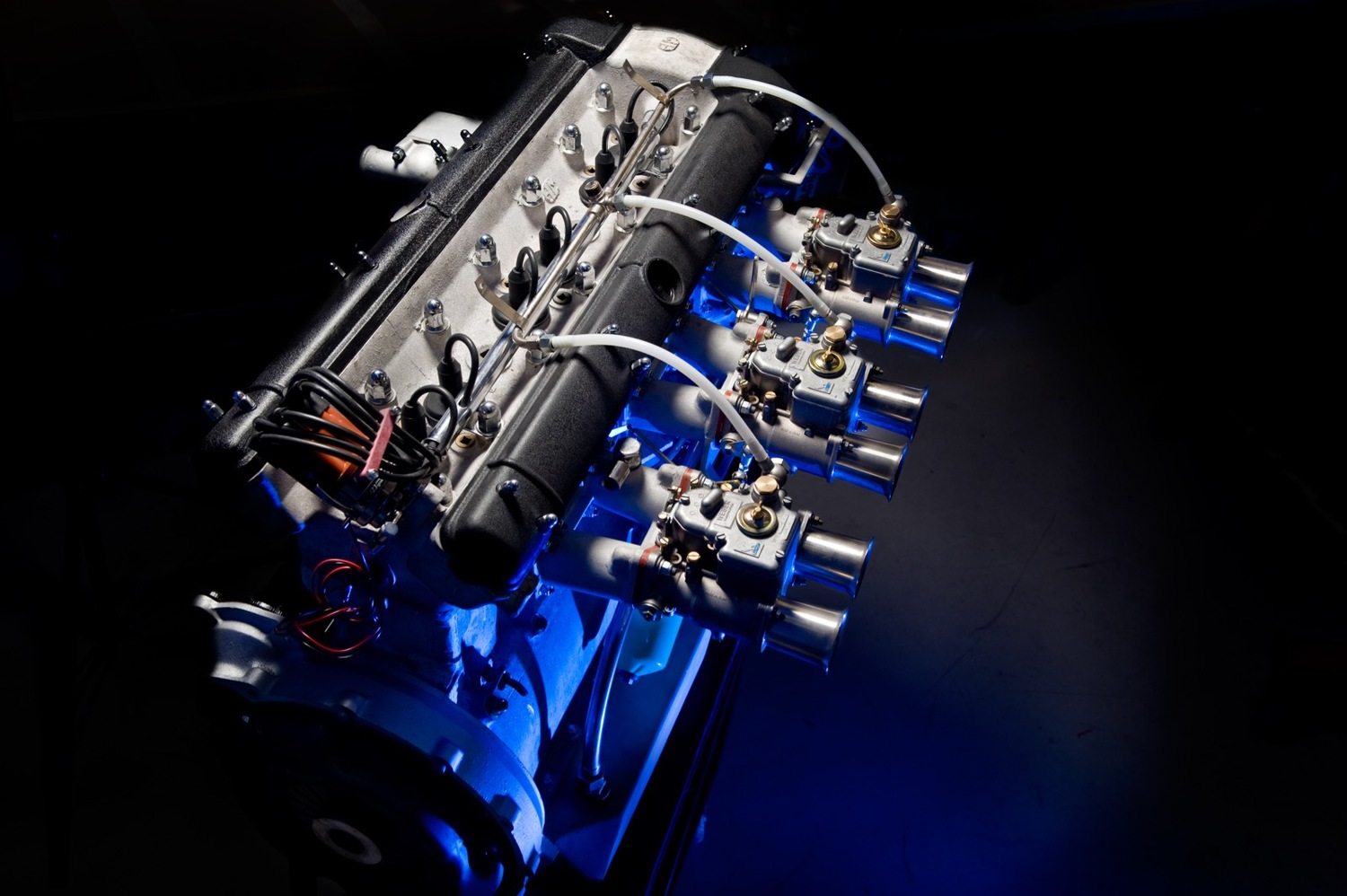
The Aston Martin DB5
Aston Martin set great store in listening to its customers, their experiences, as well as the service experience it itself acquired from the servicing and repair of customer cars. Through that feedback the DB4 evolved through no less than 5 distinct series, each with an additional set of modifications being embodied on the production line. It was clear that by the Spring of 1963 that the modifications, incorporated and planned, were of a sufficient number and significance. A new model could be justified and an announcement to that effect was be made at the 1963 London motor show. The DB5 was born.
The one major change was the increase in engine capacity from 3.7 litre to 4 litre, as the most direct way to increase power and torque to offset the growing weight of the car with its additional equipment. However, there were other significant changes also included, the aim of these being to make the car more luxurious, and through some advanced ideas, be able to market the car as the last word in modernity, comfort, style and performance befitting a top of the line GT car.
The DB5 engine specification recalled the triple 2 inch SU carburettors of the DB4 Vantage, which, when added to the increased capacity of the 4 litre engine, provided a useful increment in power and torque; this recovered all of the lost performance from the car’s added weight. A Vantage engine option was added, this time with triple Weber DCOE45’s allied to the standard single plug head, though with a small increase in compression. A claimed 325 bhp was claimed for this engine option. One other significant change was the incorporation of a 4 silencer exhaust system, to improve the general refinement of the car.
Other significant changes to the DB4 standard specification included the use of a 5 speed ZF manual gearbox, a revised final drive ratio, a change from Dunlop to Girling 4-wheel disc brakes of increased size, a divided twin servo brake system, electric windows as standard, variable rear suspension dampers, electric engine fan, an alternator and other refinements such as an electric demisting rear window. The success of this model can be measured by the company selling just over 1000 cars over little more than a 24 month period, representing a peak in car production that would not be bettered until the arrival of the DB7.

The Aston Martin DB6
In the spring of 1963, serious thought was being given to what should succeed the DB5. The longest lead item for development was a completely new engine, but a great deal of thought was also being given to how the appearance of the car could be changed to bring it right up to date with the modern styling of market competitors. One of the key drivers was the notable customer demand for improved rear seat accommodation, which in the DB5 was at best cramped with minimal rear seat leg- and headroom. There was also some concern around experience of the DB5 at speed on the motorways, with it not being as stable as it should be, and this led to some serious investigation to establish the true facts. What was discovered was a significant level of rear lift and also some at the front, and with a cross wind came a feeling of instability. This lift also notably increased the aerodynamic drag, with obvious consequences for maximum speed and fuel efficiency.
Another key concern that was aired, which directly led to the launch of the DB6, was the cost in time and resource required to tool up for a new car and chassis, while still maintaining the peak production volumes of the DB5. Accordingly, a decision was reached early in 1964 to introduce the DB6 as the run out model of the DB4 era, while with more time, the tooling, planning and development of the DBS could proceed.
With the DB6, therefore, the engine specification, with minor tweaking, was continued unchanged from the DB5. The same Vantage engine option was also added, though again, with minor changes to camshafts, that further increased the claimed Vantage power output to over 325 bhp. The most obvious change that came with the DB6 was the Kamm tail shape of the rear of the car, but other subtle changes were made which together gave a notable increase in rear seat legroom and headroom, a key design requirement. The reduction in lift and drag was notable and this alone increased the maximum speed to just below 150 mph, with notable reduction in the 0 to 60 and 0 to 100 mph acceleration figures compared to the DB5. So swift was the DB6 Vantage when road tested, that they closely rivalled the figures obtained with the DB4 GT. Other aspects of the car were carried over from the DB5 with an identical specification.
The Aston Martin DB6 Mk2
By 1968/9, and with the DBS yet to establish itself, it was thought sensible to offer a facelifted DB6 which was duly launched in 1969 as the DB6 Mk2. With the DB6 Mk2 came a number of innovations, of which the most notable was a fuel injected variant of the Aston Straight-6 engine. Developed in conjunction with BRICO, it promised a major improvement in engine refinement and efficiency, as well as a useful increment of additional engine torque. Being analogue, it was a system that became notorious for losing tune and was intensely disliked. However, when it was working correctly, it gave an engine of comparable or better performance than the Vantage, with markedly improved fuel consumption and legendary refinement. This development clearly points the way forward in the quest to improve this impressive engine and increase its power, refinement and efficiency, using an EFi fuel injection system.
The appearance of the car was externally most notable with wheel arch flairs, wider wheels and the inclusion of the same seats that were designed for the DBS. This with a 2 stage rear suspension makes the DB6 Mk2 the drivers favourite of the entire DB4, 5 and 6 range, offering the most comfortable ride, but with a steadiness and level of neutral handling that makes this model the car of choice to drive.
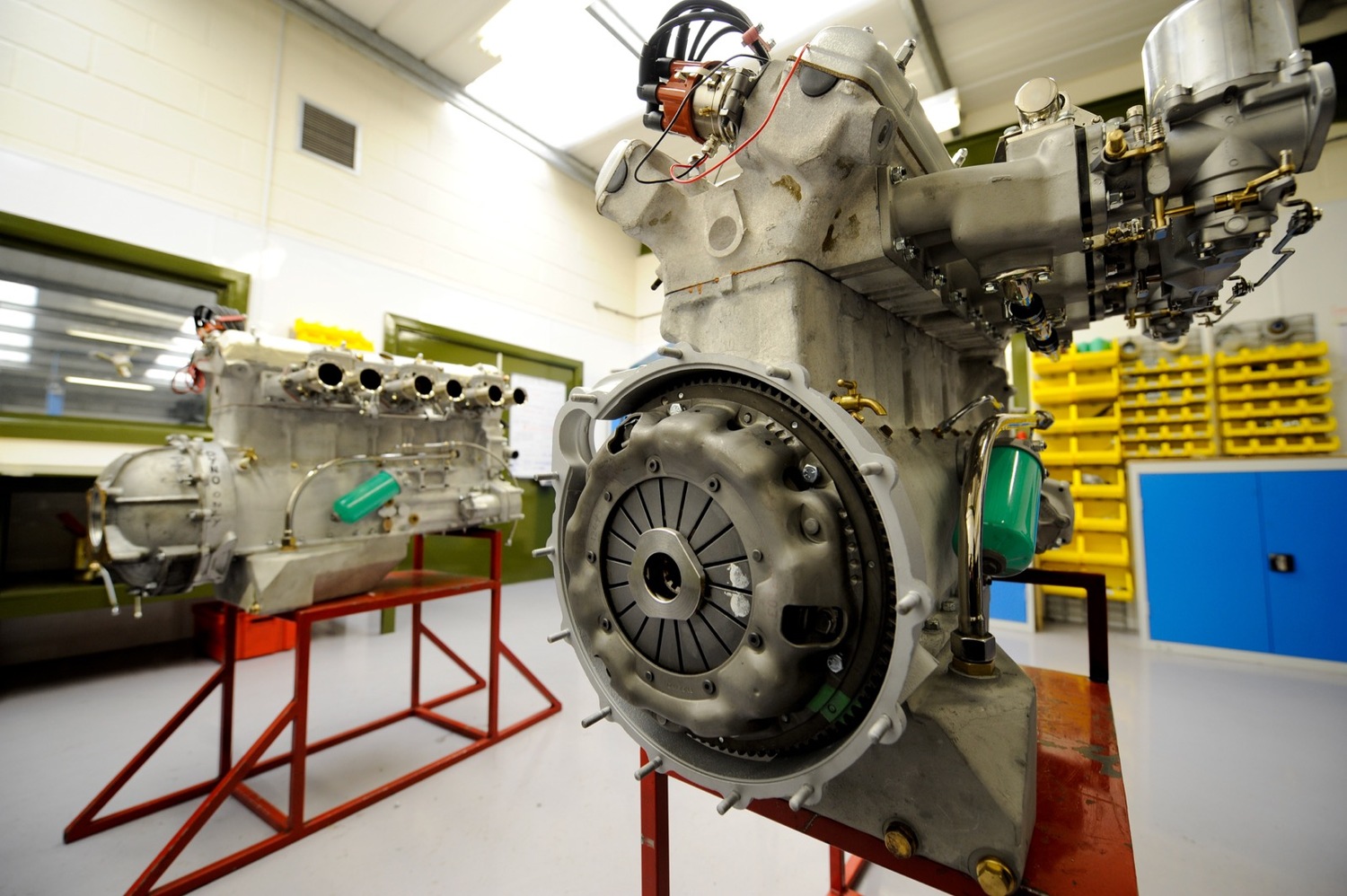
The Aston Martin DBS
From the outset, the intention with the DBS was to use the V8 engine being developed by engine designer Tadek Marek. From the outset, the dimensions of the car had to be such as to accommodate the considerable width of the engine when complete with its induction and exhaust systems. Various designs were evaluated during the course of 1964, and Touring of Milan was tasked with producing a modernised design, in this case a 2 seat open sporting car. However, while Touring was developing his designs, William Towns, at that point engaged as an interior designer, showed some design sketches that he had developed and from these the design of the DBS was developed.
It was also at this point that Chief Engineer Harold Beech was also tasked with updating the design of the chassis and suspension. It had been a long term ambition of Beech's to introduce an independent rear suspension and the opportunity to incorporate a De Dion rear suspension located with twin trailing arms was at last adopted. The rear brakes were moved inboard to reduce unsprung weight. In other respects, the front suspension design remained largely unchanged but with revised springs. As can be seen, the DBS represents a radical departure from the design of the DB4, 5 and 6, which was exactly what the senior directors of Aston Martin, and in particular David Brown, considered so essential for this new model.
The planned V8 engine however was trailing the planned date of the DBS launch; so much so, that in late 1967 a decision was taken to launch the DBS alongside the DB6, using the same 6 cylinder in-line engine in standard and Vantage tune. The same 5 speed gearbox was also used and with the same final drive ratio. The DBS was launched at the 1968 London motor show. In 1969, the same Fuel Injection option was also offered as also with the DB6 Mk2.


